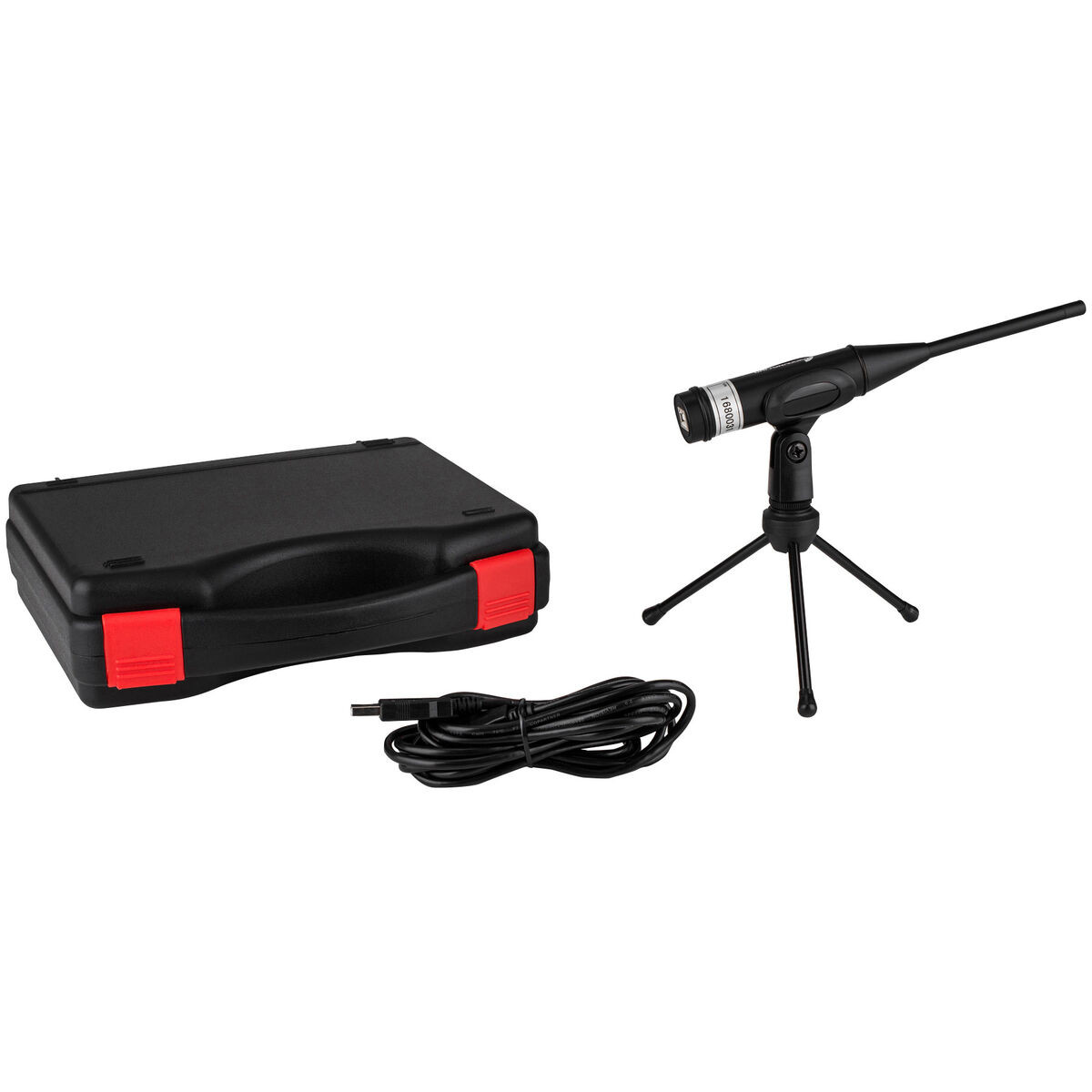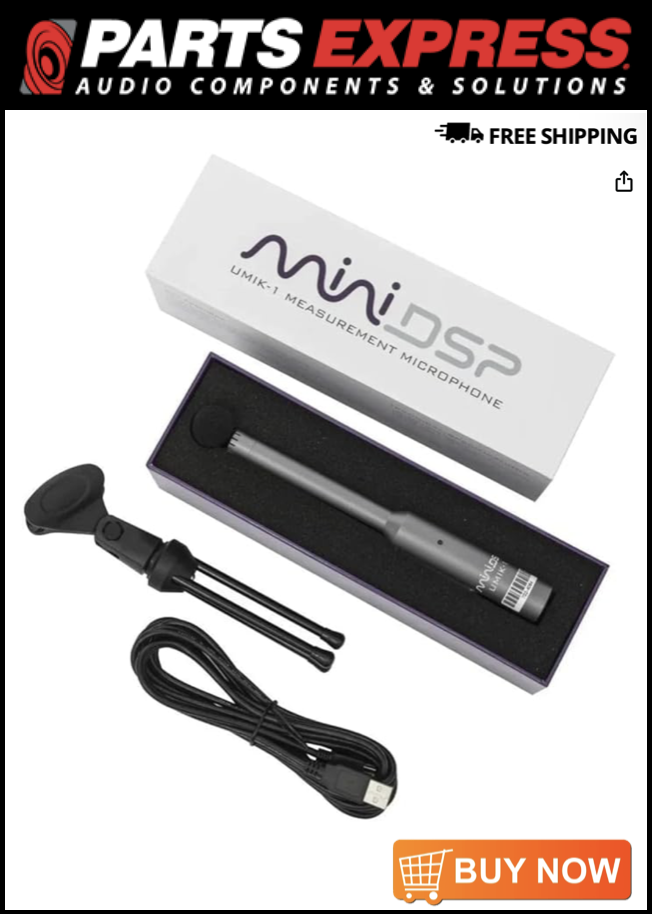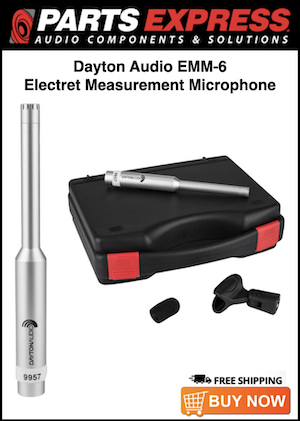Sound_plan
Registered
Thread Starter
- Joined
- Aug 10, 2021
- Posts
- 10
More
- Preamp, Processor or Receiver
- Editor UA 25EX
- Front Speakers
- Presonus Eris E5
I saw The miniDSP UMIK-1 USB microphone was recommended for REW, and I'm thinking of getting that, but it's gonna run me 230$ Canadian, and I was wondering if there were alternatives, or cheaper microphones that would still do a good job, and have the right calibration files and so on.
I think USB is a good way to go, because I can use it as an SPL meter, and don't have another reliable one. I know phone apps can be wildly inaccurate, and I have no reference to test how accurate my phone is. And buying an SPL meter sort of takes away value from the mic. A XLR measurement microphone might be interesting to use just as a microphone, however, I don't think I'd me using omni much anyway, so, I think USB is the best way for me to go.
Are there other good options to look at? Or should I just get The miniDSP UMIK-1?
I think USB is a good way to go, because I can use it as an SPL meter, and don't have another reliable one. I know phone apps can be wildly inaccurate, and I have no reference to test how accurate my phone is. And buying an SPL meter sort of takes away value from the mic. A XLR measurement microphone might be interesting to use just as a microphone, however, I don't think I'd me using omni much anyway, so, I think USB is the best way for me to go.
Are there other good options to look at? Or should I just get The miniDSP UMIK-1?












